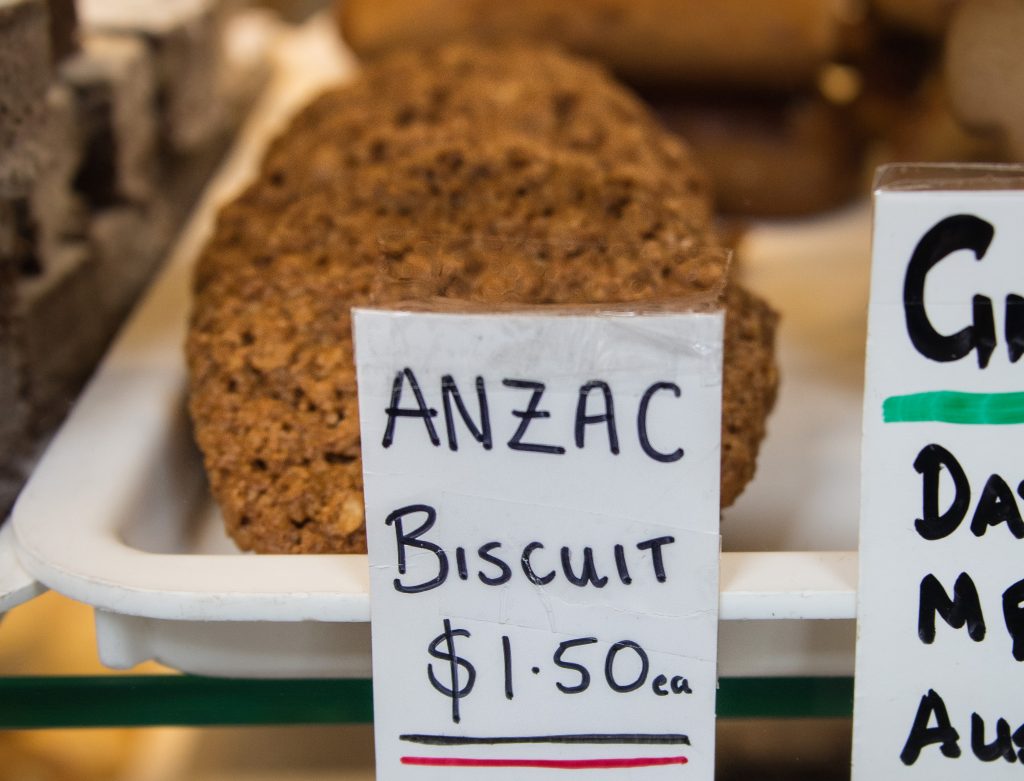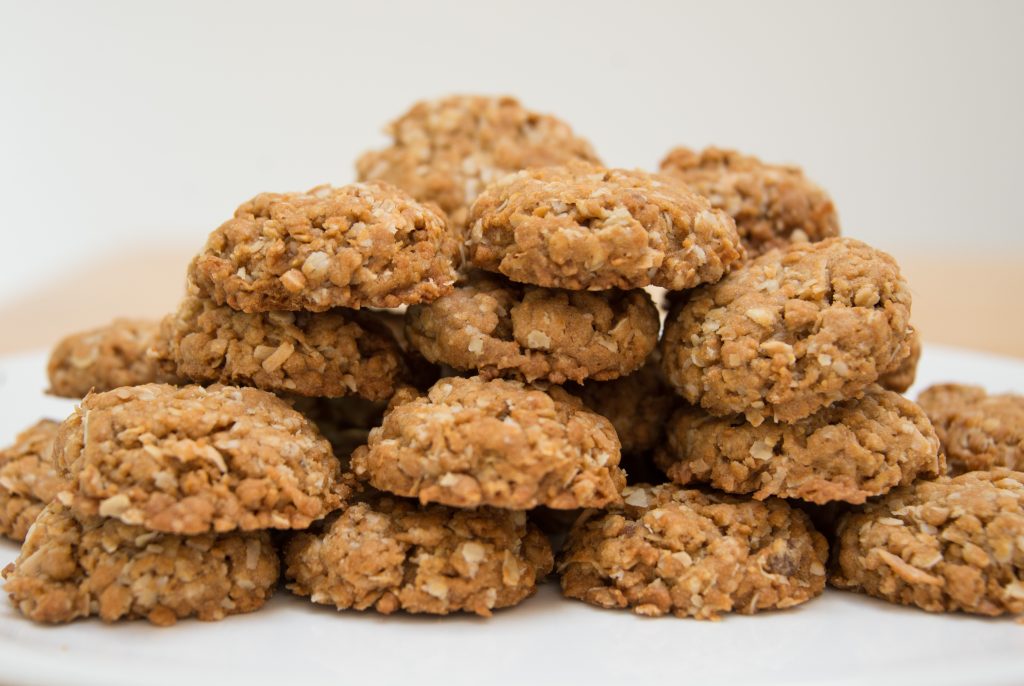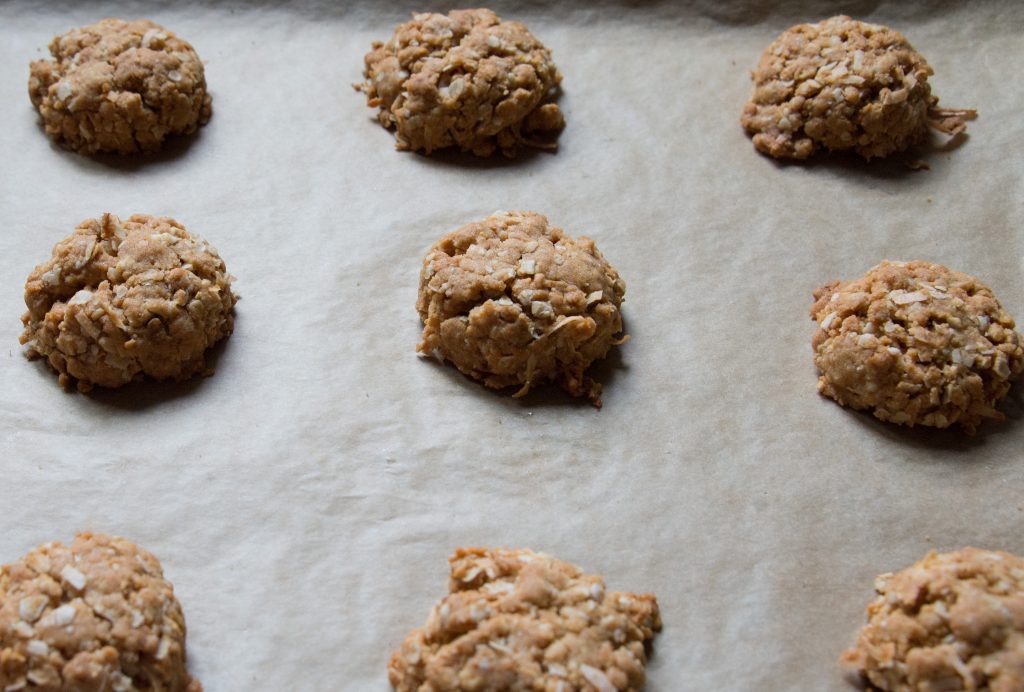
Traveling through Australia and New Zealand’s South Island, I learned that Anzac biscuits are about as prevalent and popular as chocolate chip cookies are in the U.S. They’ve been around a bit longer, though. While chocolate chip cookies originated in the late 1930s, Anzac biscuits date back to World War I, when Australia and New Zealand established the Australian and New Zealand Army Corps, or ANZAC. Sent to Egypt for training, the ANZAC soldiers took along tins of sturdy and wholesome oatmeal biscuits. Hence the name “Anzac biscuits.”
Created without eggs, Anzac biscuits traveled well and possessed a long shelf life. These traits came in quite handy, because loved ones often mailed these cookies to the troops. The baked goods then spent two months on a ship without refrigeration before reaching the soldiers.
ANZAC Day

Had it not been for the ANZAC troops’ efforts and sacrifices at Gallipoli, Turkey, their eponymous treats may have drifted into obscurity. However, as a result of the corps’ bravery during eight months of fighting, Australia, New Zealand, Tonga, Samoa and the Cook Islands all celebrate ANZAC Day. Held on April 25, the first day of the Gallipoli campaign, this day of remembrance includes the baking and consuming of Anzac biscuits. Placed in decorative tins, the sweets are also sold to raise funds for military veterans and, during wartime, war efforts.
Early recipes include golden syrup
According to New Zealand’s National Army Museum, a reference to Anzac biscuits first appeared in print there in 1921. The traditional recipe consisted of rolled oats, flour, sugar, butter and golden syrup. The last ingredient, golden syrup, may not sound familiar to American ears, but it’s a common ingredient in British and some Oceanic dishes. Made by refining cane sugar or beet sugar juice, golden syrup — or light treacle as it’s also known — possesses a rich, slightly caramel flavor and smooth, viscous texture similar to honey or corn syrup.

Minor alterations to the Anzac biscuits recipe
If you can’t track down golden syrup, you can substitute light corn syrup. Because Anzac biscuits require so little golden syrup, I use honey instead of the corn syrup alternative. In this recipe, the difference is negligible.
Another option is to include shredded coconut. Some bakers add it to this simple batter. Others don’t. I find that sweetened shredded coconut brings complexity and a richer flavor to the biscuit. If you’re not a coconut fan, feel free to omit it.

What you shouldn’t change is the low temperature and longer baking time demanded by these sweets. By keeping the oven thermometer at 325 F and baking the Anzacs for roughly twice as long as you would oatmeal or chocolate chip cookies, 20 minutes versus 8 to 12 minutes, you end up with the crispness and hardiness for which the biscuits are famed.
Anzac Biscuits
When stored in an airtight container in a cool, dry place, Anzac biscuits will keep for a minimum of three weeks. When bundled in plastic wrap, sealed in airtight, plastic bags and frozen, they will last for at least three months.
Yields: 3 dozen cookies
Ingredients
1 ½ cup all-purpose flour
1 1/2 cup rolled oats
¾ cup firmly packed light brown sugar
¾ cup sweetened shredded coconut
Pinch salt
10 tablespoons unsalted butter
1 1/2 tablespoons honey
3/4 teaspoon vanilla
1 1/2 tablespoons boiling water
3/4 teaspoon baking soda
Directions
Preheat the oven to 325 F. Line two baking sheets with parchment paper.
Sift the flour into a large bowl. Add the oats, brown sugar, coconut and salt and toss to combine.
In a small saucepan, melt the butter over medium heat. Whisk in the honey and vanilla and remove the pan from the heat.
Combine the boiling water and baking soda in a small bowl and stir together. Pour the water mixture into the butter mixture and stir together. Note that combining the two liquids will cause them to foam up.
Make a well in the center of the dry ingredients and pour the liquids into this. Stir the wet and dry ingredients together until a well-combined, crumbly batter forms.
Using a tablespoon, measure out equal amounts of batter and place each tablespoonful onto the parchment-lined baking sheet. Leave roughly 1 inch between each cookie.
Bake for 20 minutes, until the biscuits have browned. Remove them from the oven and cool for 10 minutes before placing them on wire racks to cool completely. Store in airtight containers.
3 Comments